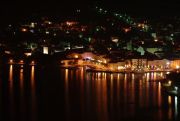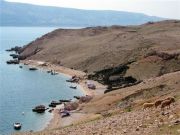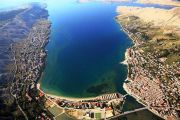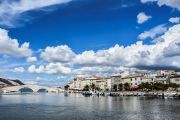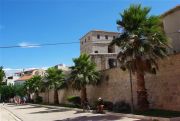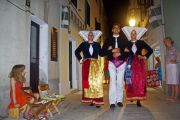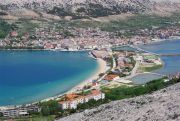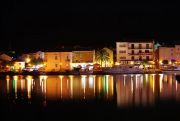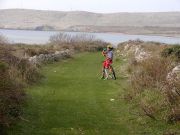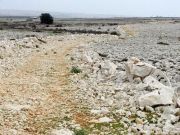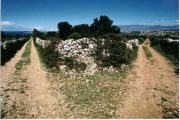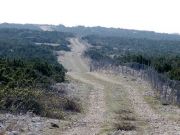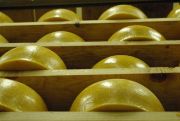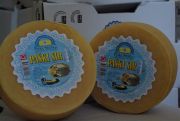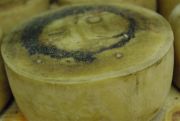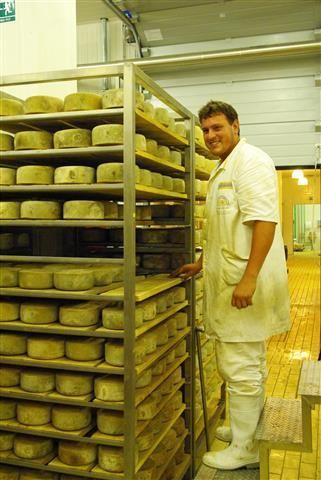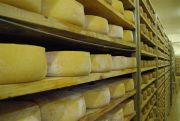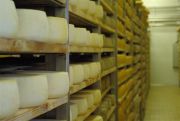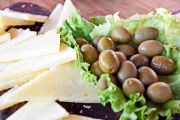 Get to know Pag
Get to know Pag  Island and town of Pag
Island and town of Pag
The new fortified town of Pag was built in the latter half of the 15th century based on a previously approved urban plan at a then deserted site near a salt pan. Before that, Pag’s residents lived in the Old Town (Stari Grad, today the shrine of Our Lady of the Old Town and an archaeological zone).
The town of Pag was developed in the tradition of medieval architecture with a central square and four streets that divided the town into quarters. The main square was the venue for all important events. It is surrounded by the parish Church of the Assumption of the Blessed Virgin Mary, the Rector’s Palace, the unfinished bishop’s manor and the Loggia.
Nearby, you can visit the Pag Lace Gallery, the Ethno Gallery, the exhibition hall dedicated to Bartul Kašić and other cultural monuments. The basic urban-planning structure of the town has been almost entirely preserved. Stroll through the town’s streets, discover some hidden niche, and get to know Pag’s residents, who will gladly talk about Pag’s peculiarities, such as a granny wearing folk attire and sitting at her front door proudly displaying Pag lace. At the onset of the 20th century, Pag spread outside of its fortified walls, and the blossoming of tourism led to the development of new neighbourhoods: Prosika, Vodice, Blato, Murvica, Bašaca, Sveta Jelena, and Bošana.
 Active vacation
Active vacation
The specific beauty of Pag’s landscape, the numerous bicycling trails and intriguing contours of the rocky terrain are attractive to adventurists who want an active vacation. Bicycling, swimming, diving, sailing, mountain climbing or just a light walk in this blend of the sea, rocks, sparse vegetation and untouched nature all offer an opportunity to return to nature, leaving no one indifferent. Besides the main roads, the island is intersected by alternative macadam lanes and field paths without motorized traffic, making them ideal for cyclists who want a take a tour. You can obtain maps and information on the numerous roads and trails suitable for bicycling at our office.
Regardless of the duration of your vacation, you will inevitably run out of time trying to see most of our island, which is an invitation to return for new discoveries.
 Diving
Diving
The undersea environment surrounding the island of Pag is truly diverse. The sandy areas inside the bay and the stone walls and plateaus of the Pag Gate and the Velebit Channel form a unique place at which the features of the central and northern Adriatic merge. In every corner, you can see hundreds of different species of fish, crabs, shellfish and molluscs.
The diving areas will satisfy even the most demanding tastes: rock walls overgrown with Gorgonia coral, caves filled with sponges, and lush meadows of sea grasses. Many underwater photographers came to Pag to seek out the multitude of sea snails that form the most breathtakingly colourful family of organisms in the world. So it comes as no surprise that numerous parts of Pag’s undersea zone have been acknowledged as cultural goods and are protected as a site in the EU’s NATURA 2000 environmental network.
 Pag cheese – an age-old delicacy
Pag cheese – an age-old delicacy
Just the mention of Pag cheese makes connoisseurs of fine food catch their breath, as their palates recall the unforgettable salty flavour of this cheese. This well-known and recognized symbol of Pag bears the Croatian Original label and represents not only Pag but also Croatia at all trade shows in the European Union. The quality begins when the year’s first bora winds race down the slopes of the Velebit massif and over the sea, picking up salt and dusting it onto Pag’s sparse island vegetation. Under such conditions, the sheep on Pag, eating the salted and medicinal herbs, produce milk with a specific aroma and flavour – which is conveyed to the cheese.
Since the beginnings of production of Pag cheese, the process has not changed, with the exception of some minor details and storage techniques in line with technological progress. Today you can buy Pag cheese at many farm households which produce it, and in any of the cheese factories on our island, where tradition and modern technology come together. Mature Pag cheese that is older than five months has a specific, above all piquant flavour, a distinctive aroma and a slightly grainy texture that crumbles and melts in the mouth. The finished cheese is formed into a wheel with an average weight of two to two and a half kilograms and a gold or golden yellow colour. Pag cheese is an authentic local speciality served as an appetizer or hors d’oeuvre, and it is often an essential ingredient in the preparation of various sauces, pastas and similar dishes.
We heartily recommend that you sample Pag cheese in one of the inns in Pag, with your hosts, or as an hors d’oeuvre in any of Pag’s restaurants.







